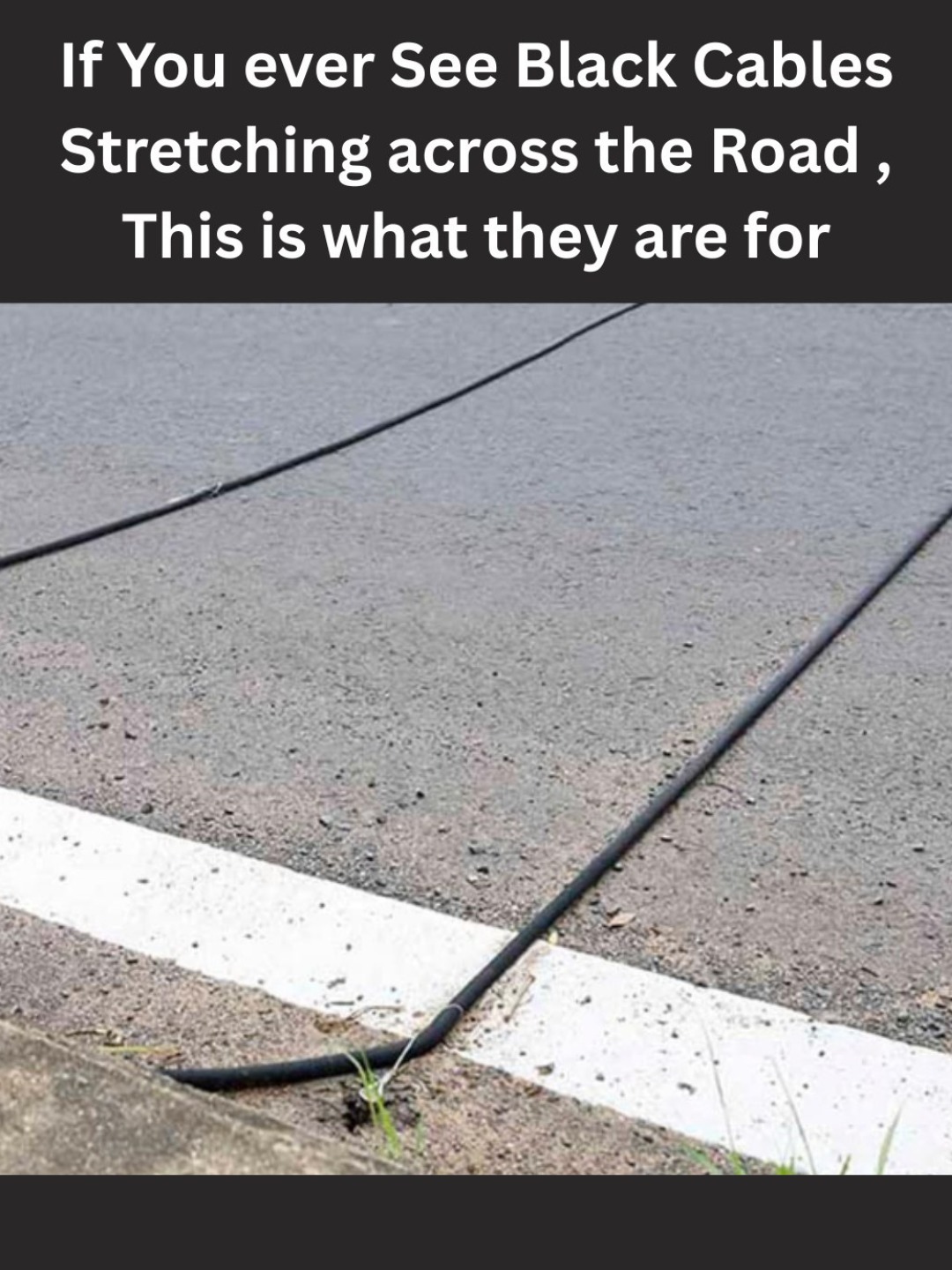
🛣️ What You Should Do When You See Black Cables on the Road – The Surprising Truth Behind Those Mysterious Rubber Strips 🚗🔍
🛠️ How It Works:
Two rubber tubes are stretched across the road and anchored at the edges.
Each time a vehicle’s tire rolls over the tube, it sends a pulse of air through the hose.
That pulse triggers a small counting device in a weatherproof box at the roadside.
The device records:
Number of vehicles
Speed
Direction
Axle count (to distinguish cars from trucks)
📊 This data helps cities decide where to build roads, time traffic lights, add bike lanes, or improve safety.
📍 Where You’ll See Them
Residential neighborhoods (measuring cut-through traffic)
Near new developments or schools
Before major road projects
Rural routes being evaluated for upgrades
Temporary spots — usually up for 24–72 hours
📌 Fun fact: Some advanced versions can even tell if you’re a motorcycle, sedan, or semi-truck based on axle spacing!
✅ What You Should Do When You See Them
Good news: You don’t need to swerve, stop, or panic.
These cables are designed to be driven over safely.
Drive normally
The tubes are tough and meant to handle all vehicle types
Stay in your lane
Avoid straddling the tubes — could mess with data or cause minor bump
Don’t pop them with sharp objects
Vandalism slows down planning that benefits your community
Report damaged or stuck cables
If one is torn or blocking traffic, call local public works
🚫 Do NOT try to move or remove them — they’re part of official monitoring.
❌ What They Are Not
Despite urban myths, these cables are NOT:
Weigh stations
Speed traps (they don’t issue tickets)
Government surveillance devices
Earthquake sensors
Toll trackers
They simply count wheels and measure flow — nothing more.
❤️ Final Thought: Small Things, Big Impact
You don’t need flashing lights or uniforms to make something important.
Sometimes, progress looks like two black tubes on asphalt.
Because behind every smooth commute, safer intersection, or new sidewalk is data — gathered quietly, one thunk at a time.
So next time you roll over those cables…
Don’t ignore them.
Acknowledge them.
And maybe even appreciate them.
Because they’re not in your way —
They’re helping build a better way forward. 💙